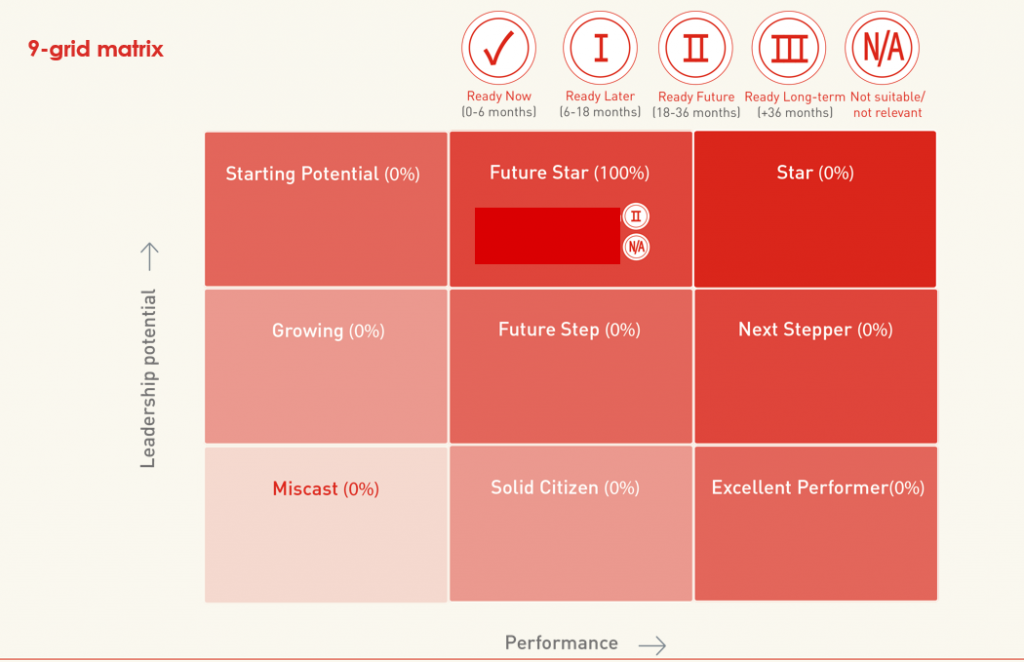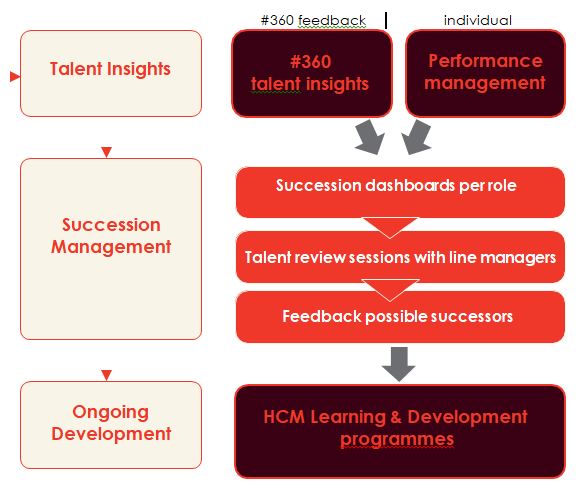KEY TAKEAWAYS
- The South African National Blood Service (SANBS) sees talent management and succession planning as a strategic imperative that ensures business continuity and sustainability.
- In succession planning, objective information must be balanced with feedback to map succession plans at individual, team, and role levels.
- An integrated talent management solution is used to measure talent objectively, conduct 360-degree feedback, and understand our talent repository, to assist SANBS with making skills available throughout the organisation.
- SANBS manages talent risk by having multiple successors for each priority roles, with a specific people development focus on building internal capacity and with a target of filling 70% of vacancies with internal promotional opportunities.
- Success stories about succession planning are demonstrated through the filling of priority positions through the effective succession planning approach, including the CEO, Medical Director, Executives for the Donor and Transfusion Medicine divisions, senior manager appointments, all reflecting the ROI of the process thus far.
SANBS is a leader in the provision of blood and blood products. We provide an indispensable service across South Africa with a significant mandate and purpose: Trusted to save lives. The magnitude of such a mandate places considerable responsibility on each and every employee to operate at a level of excellence, and even greater responsibility on SANBS leaders and the board to plan for the future and mitigate any people risks.
Our Board has oversight and support of the continued implementation of the SANBS culture of performance and the #360 Degree Leadership Assessments to support and build leadership depth.
To achieve and maintain a high performing culture, SANBS invests extensively in talent initiatives, including our annual 360-degree performance programme. Significant focus is placed on hiring and developing the right talent to execute the mandate. In 2018, in line with good corporate governance practices, SANBS identified the clear need for an effective succession planning process that would enable us to identify talent gaps, establish career paths, reduce organisational risk, and ensure business continuity. Monitoring the strengthening of the leadership depth and talent management through progress with development programmes that have been formalised following the outcomes of the #360 Leadership Assessments.
To address this need, SANBS collaborated with a consultancy, Lumenii, to design and deliver an end-to-end, effective succession planning solution. Effective succession planning is essential for organisational resilience, as it allows us to plan for the unexpected, as well as for the things we know will happen but just don’t know when. Suddenly needing to replace unexpected loss of key talent is ineffective, expensive, time-consuming and creates a clear risk of inability to attract and retain good talent. Due to the importance of SANBS’ service, all possible risks of service interruption must be mitigated.
RISKS ASSOCIATED WITH NEEDING TO REPLACE TALENT UNEXPECTEDLY
Induction and onboarding timeframes: filling vacancies, especially for senior and critical roles takes time, and is not easily undertaken without planning.
Institutional knowledge: SANBS employees embody a wealth of institutional knowledge on how to deliver world-leading services effectively.
Disengagement and attrition: retaining and motivating employees require SANBS to ensure that employees are engaged, by meeting the need for clear career pathways, progression and personal development.
Strategic direction: failure to consider our future organisational priorities, needs and leadership demands could result in a stagnant organisation that is ill prepared for the ever-changing environment.
IMPORTANT ATTRIBUTES OF SUCCESSION PLANNING: PRINCIPLES AND DRIVERS
SANBS subscribes to the THREAD values. We aspire to be Transparent, Honest, Respectful, Excellent, Accountable and Diverse in our talent management. To be fair, efficient, and cost effective, effective
succession planning at SANBS must:
- Avoid biases (supporting transparency): objective measures of talent and ability are the foundation for avoiding interpersonal biases in decision-making.
- Dovetail with existing data (supporting accountability): existing performance, 360-degree, KPI’s and integrated scorecard data must be integrated to ensure a holistic perspective of each employee.
- Include Leadership input (supporting excellence): line management and individual input about possible successors are as important as
data-driven insights.
- Incorporate Honest feedback (supporting honesty): feedback to possible successors brings them into the succession process as co-creators of their development journey.
- Support the ethics and culture programs (supporting diversity): ethical leadership and a people-centric culture are cornerstones of SANBS’s success.
DELIVERING SUCCESSION PLANNING
The key steps of the comprehensive SANBS succession planning programme are:
1. Talent insights
- An integrated, online talent management platform by Lumenii provides SANBS the tools to objectively assess potential, including role-fit, competencies and Learning Agility.
- 360-degree surveys, based on SANBS determined leadership competencies, provide structured feedback on leadership behaviours.
- Balanced score card individual performance information, including KPI’s, are link to the organisational metrics.
2. Succession management
- 9-grid matrices bring together assessment and organisational metrics by plotting potential versus performance of the succession pool.
- Quantitative metrics on leadership potential, ability, agility and performance are integrated into succession dashboards to provide an objective foundation.
- Qualitative information about employees’ observed strengths and development opportunities are brought in via talent review sessions with line managers.
- Readiness level is mapped out per employee, with details on their development and experiential requirements.
3. Ongoing Development and Support
- Each role has a set of possible successors, including readiness level per successor.
- Feedback from employees themselves helps to provide context around career goals and aspirations.
- Each potential successor has a development plan, which feeds into future learning and development needs. These development opportunities are built into our SANBS academy learning plans.
- Organisational and division-level reporting give a consolidated view of succession readiness and risk for each area.

KEY OUTCOMES
Succession planning enables SANBS to achieve its strategic objectives:
- Ensure current and future business continuity and sustainability;
- Appoint 70% of promotional vacancies with internal employees;
- Highlight talent gaps that can be addressed via the talent acquisition process, promotion opportunities and development intervention;
- Retain critical institutional knowledge within the organisation
- Have multiple successors for critical points of failure
- Know the readiness and development needs of each successor
An effective succession planning solution also:
- Improves honest career conversations between managers and team members
- Provides teams with certainty about their future
- Provides individuals with a clear focus for their development efforts
- Enables overall succession risk to be monitored by EXCO, the board, and the audit committee
“Going through the succession process has given me the insight I need into my new team, where they are now and where they could grow in future. It’s really great that we can now bring together objective data with mangement and employee insights” Marion Vermeulen, Executive: Transfusion Medicine and Technical”




1 comment
Excellent case study! Well done